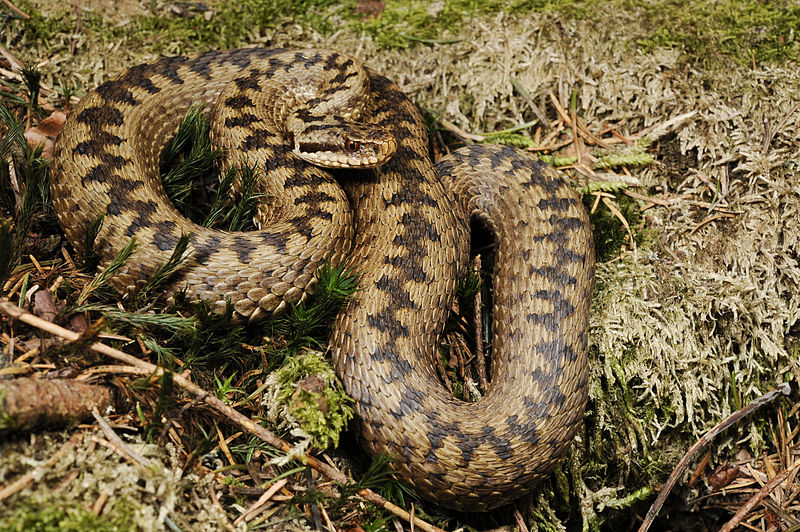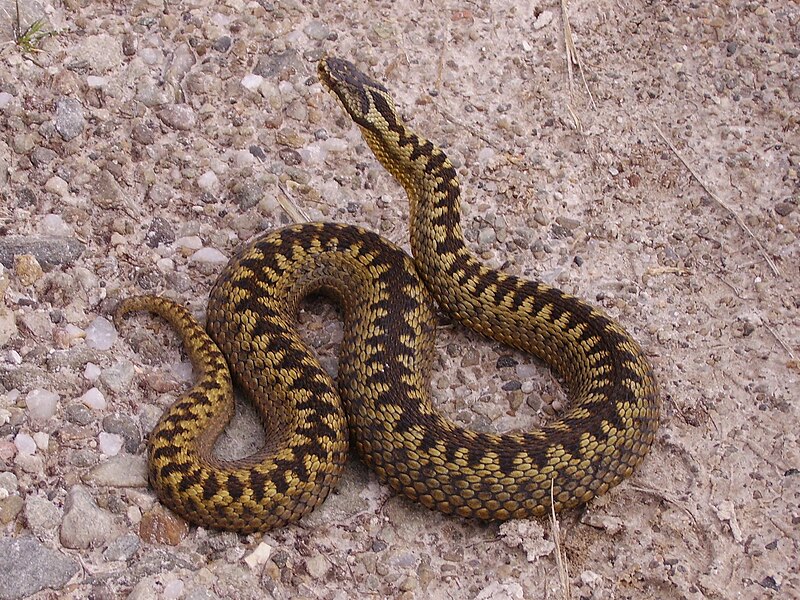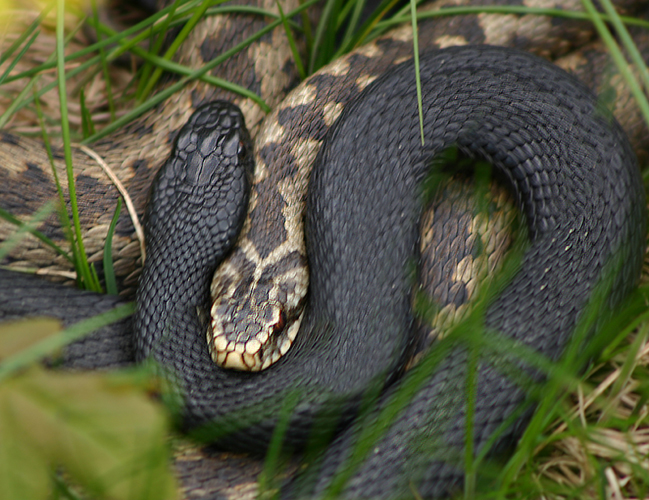Britain’s only venomous snake, the adder (Vipera berus), is experiencing a significant decline. Once widespread throughout the country, these elusive snakes have been silently enduring a devastating population collapse for decades.
A recent survey indicates the population has suffered up to a 90% decrease, reduced to the dwindling pockets of their heathland, moorland, and forest edge habitats. Technically, they can be spotted across all regions of the country, with numbers now believed to rest at approximately 100,000. Though this leaves them out of danger of extinction for now, the trend is worrying, especially given their status as an indicator species: a measure of overall biodiversity health.
All has not gone completely unnoticed. The Wildlife and Countryside Act 1981 made it illegal to kill, injure, harm, or sell adders, and they have been classified as a Priority Species under the UK Biodiversity Action Plan. However, generally in wider society, the plight of the adder falls outside mainstream conversation.
Several factors have contributed to the adder’s sharp decline. Habitat loss and fragmentation through human development are primary culprits. Farm expansion, urban development, and infrastructure projects have encroached upon their natural habitats, leaving them with increasingly isolated and degraded environments, harming their genetic diversity and access to food sources.
Adders rely on specific temperature ranges to regulate their body heat, and changes in weather patterns can disrupt their hibernation cycles (October to March) and reproductive success. This has left them particularly vulnerable to climate change. Additionally, human persecution, driven by fear and misunderstanding of these snakes, continues to impact their chances for recovery. Adders are sadly often killed on sight, despite being generally non-aggressive and posing little threat to humans when left undisturbed.
Like other mid-level predators, adders help control populations of small mammals, such as rodents, which serve as their primary prey. They also provide crucial prey for larger predators, particularly birds of prey and mammals such as foxes.
Adders appear in various British folklore and myths, often associated with danger and mystery due to their venomous nature. They were sometimes believed to be creatures of ill omen or associated with witches and dark magic. However, they were also respected and feared, symbolising the wild and untamed aspects of nature. In Shakespeare’s works, snakes are often used to depict betrayal and hidden dangers.
The adder’s image is also prevalent in local traditions and stories, particularly in rural areas. For many, encountering an adder in the wild remains a memorable and profound experience, connecting people to the natural world and its mysteries.
It is for these reasons that more must be done to save the adder.
Educational campaigns aimed at dispelling myths and reducing the fear surrounding these snakes would promote a more positive perception. Community involvement through workshops, public talks, and the distribution of educational materials. By fostering a better understanding and appreciation of adders, these initiatives help build support for their conservation.
Mitigating specific threats to adders is a key aspect of conservation efforts. Given the devastating levels of defragmentation their populations suffer due to infrastructure networks, road mortality is a significant issue, and measures such as wildlife crossings and road signage reduce the risk of roadkill.
Several organisations are at the forefront of adder conservation, particularly The Amphibian and Reptile Conservation (ARC) Trust, which conducts research, habitat management, and public outreach.
By addressing the threats adders face, many other species and habitats will benefit, not just Britain’s only native venomous snake. Through a combination of research, public engagement, and policy measures, the decline of this remarkable species can be reversed for future generations.

Common Adder.
By Benny Trap.

Adult female. Loch Shin, Scotland 2008.

Two colour variations. 2008.
